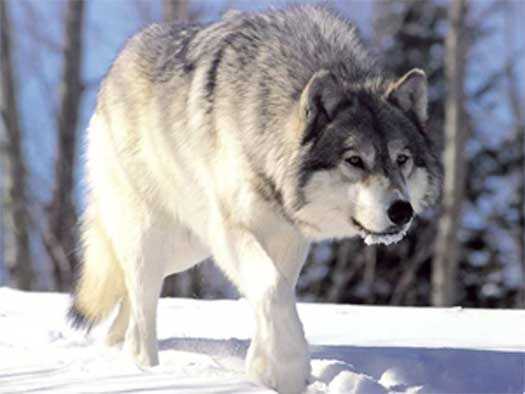

A wolf's paw can be up to 6 inches long. In order to walk better in the snow, one wolf will make the initial trail and all other wolves will follow by stepping in the original footprints. In a single bound, a wolf can leap 16 feet. Wolves can run up to 28 miles per hour in short sprints over open terrain and 22 mph for approximately 2 miles. This is slower than most of their prey. Their average pace is about five to nine miles per hour. (http://www.wolfsource.org/?page_id=70)
Wolves toes spread apart when they step in the snow so they do not sink. Wolves walk and run on their toes. Wolves have four toes on their hind feet and five toes on their fore feet. There is a slight webbing between each toe, which allows them to move over snow more easily. Wolves are digitigrades (an animal that stands or walks on its digits, or toes) and the relative largeness of their feet helps them to distribute their weight evenly on snowy surfaces.
Bristled hairs and blunt claws help wolves to grip on slippery surfaces, and special blood vessels prevent their paw pads from freezing. Scent glands located between a wolfs toes leave trace chemical markers behind, helping the wolf to effectively navigate over large areas while keeping others informed of its whereabouts. Unlike dogs and coyotes, wolves lack sweat glands on their paw pads. (http://www.animalcorner.co.uk/wildlife/wolves/wolf_anatomy.html)
